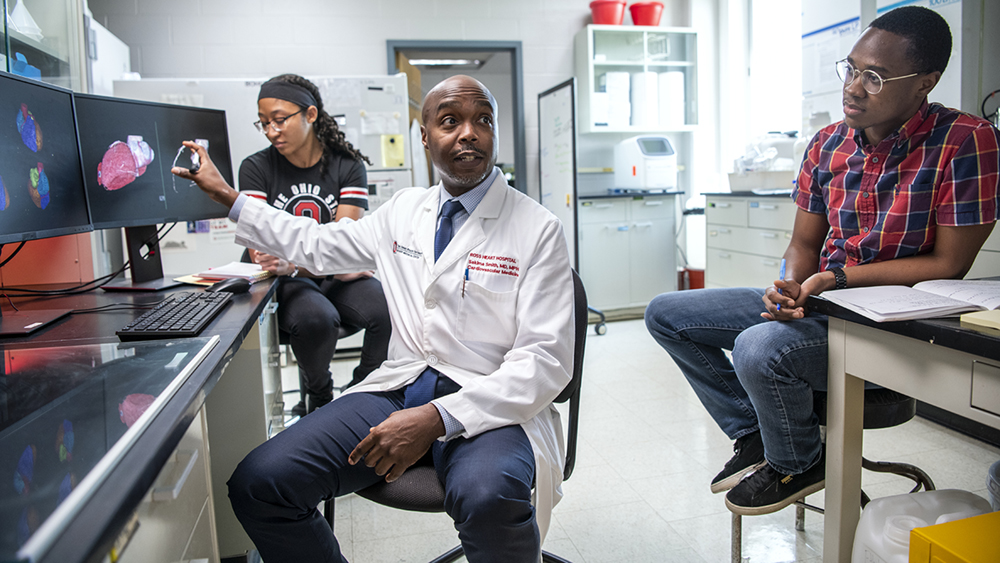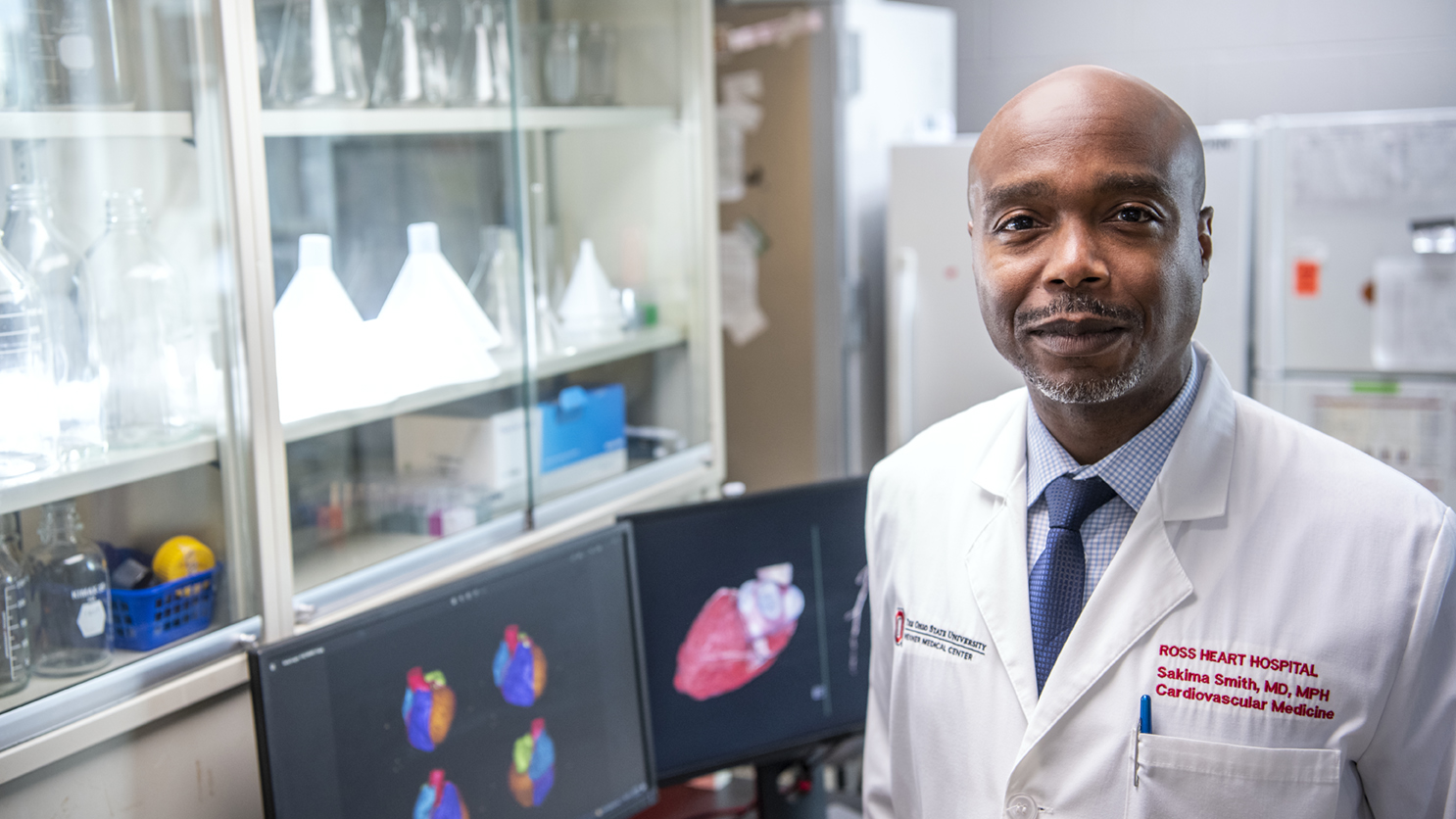Forging new futures in the field of cardio-oncology
Smith’s work is building new understanding of the potential effects some cancer treatments have on the heart

Within the past decade, cardiologists and other clinicians began to notice a puzzling trend.
A small percentage of their patients who had previously been treated for cancers were developing heart conditions. More questions than answers were available, so researchers around the globe began exploring a new field called cardio-oncology, with a goal of understanding the connections between cancer treatments and the heart.
For some researchers, like Sakima Smith, MD, MPH, the work is personal.
Smith, a heart-failure transplant cardiologist and cardio-oncology researcher at The Ohio State University Wexner Medical Center who holds the Bob Frick Research Chair in Heart Failure and Arrhythmia, witnessed this tragedy early on in his medical career.
During his first year as an attending physician, Smith met a 28-year-old man suffering from cardiac shock. He was on a ventilator, his heart essentially not functioning anymore.
Puzzled, Smith and others conducted a barrage of tests to determine what led to this young man’s heart failure. Looking into his medical history, they found he suffered from lymphoma when he was 3 years old.
Chemotherapy had helped the boy enter remission. But years later, as an adult, his heart would begin to exhibit signs of heart failure, an unintended side effect from his cancer treatment.
This patient piqued Smith’s interest in the links between cancer treatment and heart failure, and motivated him to learn how it can be prevented.
“Who wants to beat one problem and now you have a secondary problem? That’s a big deal,” Smith says. “This research is critically needed.”

Since then, Smith and others in his research program have been making huge strides in the emerging field of cardio-oncology.
By utilizing cellular and molecular models, they are gaining a better understanding of the pathways where anticancer medications can damage cardiac cells.
With improved knowledge of these pathways, the team is investigating novel breakthroughs to protect the hearts of those cancer patients who experience cardio-toxicity.
In addition, they are able to research better methods for protecting and monitoring the heart during cancer treatment.
Smith says Ohio State has the capabilities and resources to become a leader in the fast-growing field of cardio-oncology.
“Here at Ohio State, with our resources, clinicians, scientists, research infrastructure … we’re poised to be leaders in this new field by collaborating.”
Smith credits the ability of the researchers and clinicians at Ohio State to work outside of their silos and come together as a major factor in their findings to date.
“We’re very proud of our work, and we’ll continue to work on this. There’s still a lot to do.”